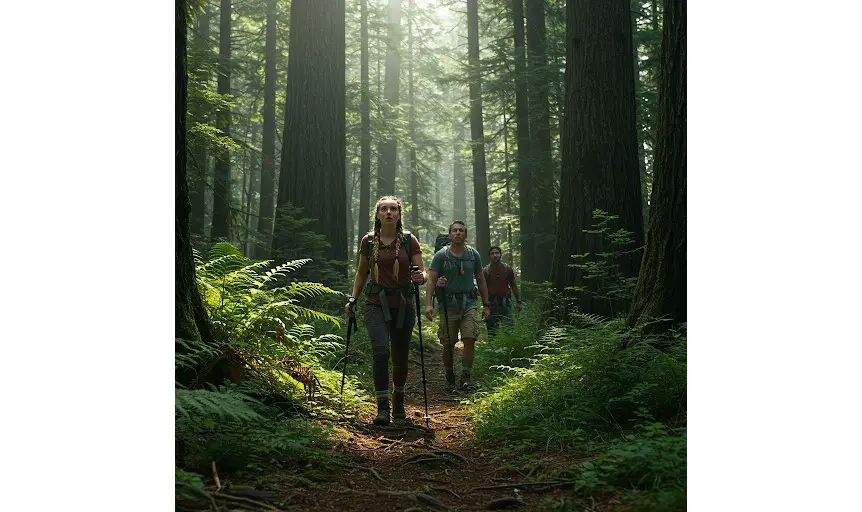Hiking: The Ultimate Sport for Body and Soul

Hiking is more than just a leisure activity; it is a sport that challenges the body and nourishes the mind. Across cultures and continents, it has found a place in both recreation and competitive arenas. This blog post explores the deep history, global reach, amateur and professional formats, social impact, and established rules of this enduring sport. With growing participation and recognition, Hiking continues to carve its space in the sports world.
The Origin and History of Hiking
The history of Hiking dates back thousands of years. Early humans walked long distances in search of food, safety, and shelter. Over time, walking evolved from a survival need into a purposeful and enjoyable activity.
By the 18th century, it began to gain popularity in Europe. The Romantic Movement encouraged people to explore nature. Artists, writers, and philosophers believed nature had a spiritual and emotional value. Walking through forests and mountains became a form of meditation.
In 1778, Thomas West published a guidebook on walking tours in the English Lake District. This book helped formalize Hiking as an organized outdoor pursuit. During the 19th century, mountaineering clubs and trail associations were founded across Europe and North America. People no longer hiked only for necessity but for health and exploration.
Japan also has a rich Hiking history. Pilgrimages to sacred mountains like Mount Fuji blended physical effort with spiritual discovery. In the Himalayas, Sherpas and local communities used trails for trade and tradition. These practices laid the foundation for modern Hiking.
Global Popularity and Geographic Reach
Today, it is enjoyed on every continent. From the Andes in South America to the Alps in Europe, trails attract millions of adventurers each year. The sport has significantly increased interest and usage of fitness trackers and smartwatches with built-in compasses, GPS, and other helpful features.
In North America, the Appalachian Trail and the Pacific Crest Trail are among the most popular routes. Europe boasts the Tour du Mont Blanc and Camino de Santiago. Africa offers routes through Mount Kilimanjaro and Table Mountain. In Asia, Nepal and Bhutan provide some of the world’s most breathtaking high-altitude hikes.
Australia and New Zealand also contribute to global Hiking culture. The Overland Track and Routeburn Track offer diverse terrain and stunning scenery. These regions draw international hikers year-round.
Countries like Switzerland, Canada, and Norway have built national tourism campaigns around Hiking. Governments invest in trail maintenance, safety services, and education. Hiking is promoted not just for fun but for its health and economic benefits.
Amateur Hiking Around the World
Hiking as an amateur sport thrives in schools, clubs, and local communities. Young people often participate in nature walks as part of physical education. These hikes help build endurance and teach students about ecology.
Youth programs like the Scouts and the Duke of Edinburgh’s Award include Hiking as a core component. These initiatives encourage teamwork, navigation skills, and self-reliance. Schools organize day hikes and camping trips to expose students to the outdoors.
Community hiking clubs cater to all age groups. These clubs plan weekly or monthly hikes, sometimes culminating in multi-day treks. Local governments often support these groups with maps, safety tips, and training workshops.
Social media has also boosted amateur Hiking. People share their trail experiences, gear reviews, and scenic photos. This digital culture makes it more accessible and appealing to the younger generation.
Urban areas now offer “urban hiking” experiences. These walks explore city parks, hills, and historic neighborhoods. It shows that Hiking can be adapted to any environment.
Professional Hiking Leagues and Competitions
While it is not an Olympic sport, it has developed a niche in the competitive world. Several regions host endurance events and speed hiking competitions.
In Europe, competitive events like the International Mountain Trails Challenge test speed and stamina. Participants must navigate difficult terrain within strict time limits. These events are gaining followers and sponsors.
The United States hosts the Annual Hiking Speed Record competition. Elite athletes attempt to set fastest known times (FKTs) on popular trails. The Appalachian Trail and John Muir Trail are key venues for these attempts.
Asia has begun organizing cross-country and uphill Hiking races. In China, the Wulong Mountain Outdoor Challenge combines hiking with biking and climbing. It brings together athletes from around the world.
Some Hiking competitions include navigation and survival elements. Participants use maps and compasses to reach checkpoints. This style combines physical and mental challenges, adding depth to the sport.
Sponsorship and media coverage remain limited but are growing. Outdoor brands like The North Face and Salomon support events and athletes. Streaming services are beginning to feature Hiking documentaries and races.
Political and Social Significance
Hiking holds deep political and social significance. It fosters environmental awareness, cultural preservation, and community engagement.
Many historic trails were used in protests or migrations. The Selma to Montgomery March in the United States is one such example. This 54-mile walk became a symbol of civil rights.
In developing regions, trail projects create jobs and stimulate eco-tourism. Local communities benefit from increased foot traffic. Hiking also promotes conservation by highlighting the importance of protected areas.
Socially, it reduces stress and boosts mental health. It encourages people to disconnect from technology and reconnect with nature. Families, friends, and strangers form bonds on the trail.
In urban settings, trail networks increase mobility and green space. This has health and safety benefits. City planners now incorporate trails into development plans.
Hiking also supports inclusivity. Programs now aim to make trails accessible to people with disabilities. Adaptive equipment and improved trail design are breaking barriers.
Rules and Ethics of Hiking
Though Hiking appears informal, it follows a set of unwritten and written rules. These ensure safety, respect for nature, and enjoyment for all.
First, hikers should stay on marked trails. This prevents soil erosion and protects plant life. Cutting across switchbacks is discouraged.
Second, the Leave No Trace principles guide behavior. Hikers must pack out all trash, avoid loud noises, and respect wildlife. Campsites should be chosen carefully to avoid damage.
Group size should remain manageable. Large groups can strain trails and disturb others. Many parks limit group size to 10-12 people.
Trail right-of-way rules apply. Uphill hikers have the right of way. Cyclists yield to hikers, and everyone yields to horses when present.
Preparedness is key. Hikers must carry water, maps, and weather-appropriate gear. In some regions, a permit is required.
Trail etiquette also includes greeting fellow hikers, offering help when needed, and keeping pets on leashes. Respect and kindness go a long way in the Hiking community.
In organized events, rules are stricter. Checkpoints, time limits, and equipment checks ensure fairness and safety. Participants may face disqualification for missing markers or littering.
Conclusion
Hiking stands as a unique blend of sport, culture, and personal growth. Its history spans continents and centuries. From school programs to elite competitions, it adapts and thrives.
It offers not just physical benefits but emotional and social rewards. Trails unite people across borders and backgrounds. They remind us of our shared responsibility to protect the planet.
As interest in outdoor activities grows, it will only become more important. With more people stepping onto trails, its impact will continue to expand. The world of Hiking is vast, varied, and waiting to be explored.





